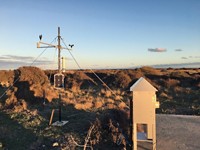Advertisement
Grab your lab coat. Let's get started
Welcome!
Welcome!
Create an account below to get 6 C&EN articles per month, receive newsletters and more - all free.
It seems this is your first time logging in online. Please enter the following information to continue.
As an ACS member you automatically get access to this site. All we need is few more details to create your reading experience.
Not you? Sign in with a different account.
Not you? Sign in with a different account.
ERROR 1
ERROR 1
ERROR 2
ERROR 2
ERROR 2
ERROR 2
ERROR 2
Password and Confirm password must match.
If you have an ACS member number, please enter it here so we can link this account to your membership. (optional)
ERROR 2
ACS values your privacy. By submitting your information, you are gaining access to C&EN and subscribing to our weekly newsletter. We use the information you provide to make your reading experience better, and we will never sell your data to third party members.
Analytical Chemistry
Method To Untangle Aerosol Composition
Climate Science: Combination technique can collect aerosol compounds every 2.5 hours, potentially helping climate researchers understand their sources
by Katharine Sanderson
October 31, 2012
Climate scientists know that organic aerosols—suspensions of microscopic particles or liquids in the air—can shape a region’s climate by scattering sunlight and seeding clouds. But scientists lack complete data on the sources and compositions of these particles, so their models struggle with aerosols’ influence on climate. Now researchers have combined two well-known analytical techniques to capture and analyze the composition of organic aerosols found in the air (Anal. Chem., DOI: 10.1021/ac3020615). The technique can collect samples every few hours, revealing the daily dynamics of the particles composition, which could help scientists understand where the aerosols come from.
For long-term studies of aerosols at research sites, scientists often collect the particles using filters. Unfortunately, with this method, researchers can monitor changes in aerosol composition only every few days, not more often.
To get better time resolution, Markus Kalberer from the University of Cambridge and his colleagues combined a different sampling method with a technique called liquid extraction surface analysis (LESA). On a dairy farm in California’s San Joaquin Valley, the researchers collected aerosols on a 2-cm-wide strip of greased plastic stretched around a rotating drum. The drum sat inside a case directly under a small opening at the case’s top, and turned 1 mm every 2.5 hours for a week, picking up particles as it went.
To analyze compounds adsorbed onto the strips, the team extracted the chemicals using LESA. In the technique, a droplet of solvent 1 mm in diameter dissolves any molecules directly below it on the plastic. To detect the hundreds of small organic molecules in each sample, the researchers then fired each droplet into an electrospray ionization mass spectrometer.
Based on patterns in the swaths of collected data, Kalberer’s team could infer where certain types of aerosols came from. For example, levels of nitrogen-rich molecules spiked when wind speeds increased, suggesting to Kalberer that those aerosols came from local farmland.




Join the conversation
Contact the reporter
Submit a Letter to the Editor for publication
Engage with us on Twitter